|
|
|

|
| The huge belly of the IA-33 is clearly seen here ; unusual wing position and landing gear makes it somewhat reminiscent of the experimental rocket and jet German fighters of the end of WWII. |
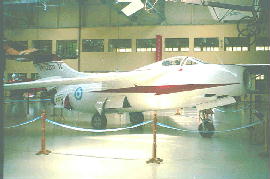 |
| enlarge (42k) >> |
| enlarge (39k) | This wide wingtip was the most troublesome part of any swept wing airplane, because airflow tended to follow parallel to the wing towards this zone, causing the tip to prematurely stall, and so this powerful aileron became useless. A solution to this was to put a barrier, like the vertical plate that is seen at the end of the aileron. |
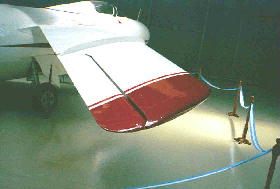
|
| Here can be (barely) seen the diminutive "T" shaped horizontal surface, a clear inheritance of the TA-183. On the left and lower side of the fuselage is the two leaf, perforated plate brake, in semi-extended position. | |
| In fact, the Nene engine main parts (compressor, combustion chambers) were all "packed" in the first half of the engine length; the rest was a narrow constant diameter tube that extended up to the exhaust nozzle. So, the Pulqui II tail had a lot of empty room, so as to permit the installation of the above mentioned brake. | 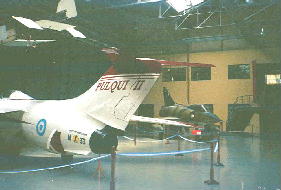 |
| enlarge (49k) >> | |
|
These two shots show the unusually thin wing roots
of this aircraft as well as their "shoulder mount" and strong
negative dihedral. ...If you see two big "boomerangs" hanging far behind, they are Horten's tailless gliders. You can see them better at TWITT site |
|
| enlarge (64k) | enlarge (49k) |
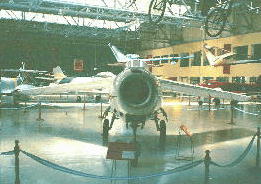
|
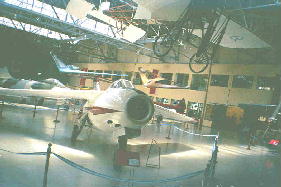
|